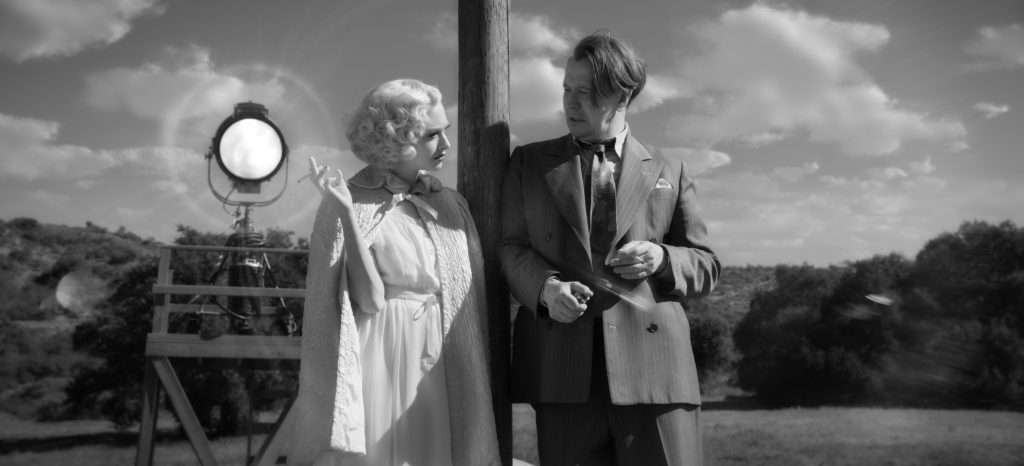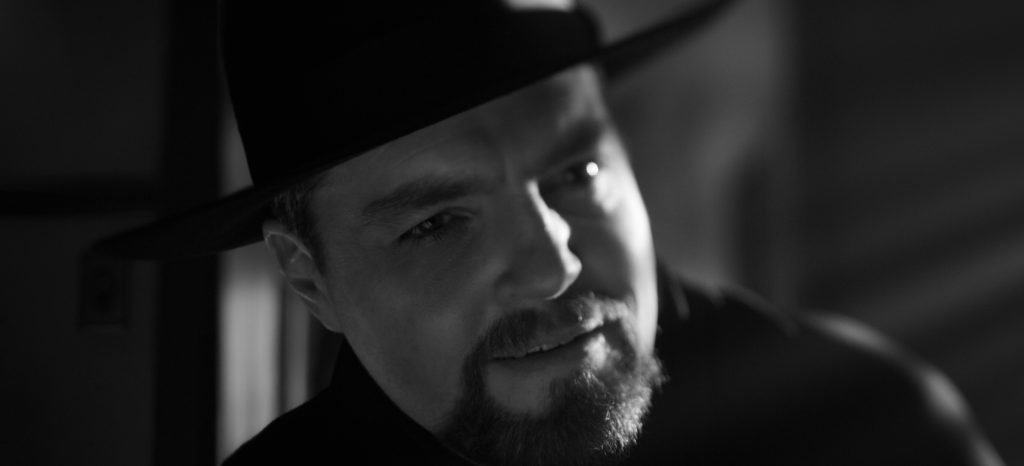April 4, 2024
by Carla Hay

Directed by Arkasha Stevenson
Some language in Italian with subtitles
Culture Representation: Taking place in Rome, in 1971, the horror film “The First Omen” (a prequel to “The Omen” movie series) features an all-white cast of characters representing the working-class and the middle-class.
Culture Clash: A young American nun arrives at a convent in Rome to take her final vows and finds out sinister things are happening at the convent.
Culture Audience: “The First Omen” will appeal primarily to people who are fans of “The Omen” movie series and horror movies that blend religious teachings with body horror.

Creepy, gruesome and suspenseful, “The First Omen” has as much to say about demonic possession as it does about institutional control of female bodies. Impressive acting and some unpredictability make this horror movie one of the better “Omen” films. The end of “The First Omen” makes it clear that there’s a lot of potential for more storylines for multiple characters who are introduced in “The First Omen.”
Directed by Arkasha Stevenson, “The First Omen” is her feature-film directorial debut. Stevenson, Tim Smith and Keith Thomas wrote “The First Omen” screenplay. “The Omen” franchise started with the 1976 movie “The Omen,” which spawned sequels, TV series and a 2006 movie remake. In 1976’s “The Omen” (directed by Richard Donner and written by Davd Seltzer), a U.S. ambassador to Italy named Robert Thorn (played by Gregory Peck) and his wife Katherine Thorn (played by Lee Remick) adopted a son named Damien (played by Harvey Spencer Stephens), and the parents are horrified to discover that Damien is a child of the devil. “The First Omen” shows how Damien was born and there is more to the story than what many viewers might assume.
“The First Omen” (which takes place in 1971) begins with a slow-burn harrowing scene of two Catholic priests having a confessional conversation at a church in an unnamed location, as one of the priests talks about a woman who “volunteered” to be impregnated. But what really happened is shown on screen: A masked woman is strapped to a table and looking like a very unwilling volunteer. An elderly British priest named Father Harris (played by Charles Dance) is telling this story to a middle-aged Irish priest named Father Brennan (played by Ralph Ineson), who listens as Father Harris says about the impregnated woman: “She wasn’t conceived naturally.”
Father Harris, who claims to be one of the people involved in getting this mystery woman pregnant, adds this information about how the woman was impregnated: “What I can tell you is that the pregnancy happened quickly.” Father Brennan thinks that Father Harris has told him this story to ask for forgiveness. Father Harris says with an eerie smirk: “You think I want to be forgiven? It’ll be all over. You’ll understand soon enough.”
Father Harris then steps outside and something bizarre happens: Shards of stained glass come plummeting down on his head. Father Harris seems to be uninjured, until the back of his head shows a large, gaping wound that he cannot survive. Before he dies, Father Harris gives a disturbing smile that shows his teeth are bloody.
This scene sets the tone for the rest of “The First Omen,” which has some uniquely effective horror images and scenarios, along with some horror clichés. Although “The First Omen” takes place in 1971, many of the movie’s themes are timeless. It’s not a preachy movie, but there are some very obvious messages about discontent with government, as well as how much religion can or should have control in people’s lives.
Because it’s not a secret that “The First Omen” is about how the anti-Christ known as Damien was born, much of the mystery in the movie is about who will give birth to Damien. Observant viewers will figure out the answer to the mystery when the birthdate of a certain character is shown. The movie is not as simple and straightforward as it first appears to be.
After the scene showing Father Harris’ death, “The First Omen” then takes place in Rome (where the movie was filmed) and shows the arrival of a young American nun in her early 20s named Margaret (played by Nell Tiger Free), nicknamed Maggie. She is warmly greeted by a British clergyman named Cardinal Lawrence (played by Bill Nighy), who meets her at the train station. Margaret has arrived to live at a convent, where she will be taking her final vows.
Cardinal Lawrence, who invited Margaret to Rome, is the one who will officiate the vow ceremony. As she and Cardinal Lawrence drive through the streets of Rome, they see crowds of activists (mostly young adults) holding protest marches in the streets and sometimes blocking traffic. Cardinal Lawrence explains to Margaret that the activists are protesting unfair wages. He laments to Margaret that the younger generation is turning against religious institutions and “no longer looks to us for guidance. Perhaps you’ll win back their trust.”
It’s later revealed through conversations that Margaret grew up as an orphan in Pittsfield, Massachusetts. Margaret has lived a very sheltered existence and is a virgin who has no experience with dating. The thought of doing something such as going to a nightclub terrifies her, because she thinks it’s sinful activity. Margaret is devoutly religious and does a lot of fervent praying every time she thinks she commits a sin, no matter how minor the sin might be.
Margaret will soon have her boundaries tested when she meets her free-spirited Italian roommate named Luz Valez (played by Maria Caballero), a novitiate who is also in her 20s and is about to take her final vows. The first time that Margaret and Luz meet, Luz has just arrived in their room after a night of partying. Luz is dressed in a black leather miniskirt and is wearing fishnet stockings.
Luz tells a shocked Margaret that there’s nothing wrong with having fun and showing off their bodies before they take their final vows, since the nun outfits they have to wear will cover up ther bodies. Luz convinces a reluctant Margaret to dress in a sexy outfit, put on makeup, and go with Luz to a nightclub. At the club, Margaret and Luz immediately attract the attention of two young men named Paolo (played by Andrea Arcangeli) and Alfonzo (played by Guido Quaglione), who offer to buy Margaret and Luz some drinks.
Eventually they pair off: Luz and Alfonzo end up dancing together, while Margaret and Paolo start off with an awkward conversation but loosen up with each other when they both find out that they are fans of Barbra Streisand. Margaret eventually begins drinking some alcohol too and begins dancing seductively with Paolo. Based on the way Margaret acts, this is the first time she has had these type of experiences.
The convent operates Vizzardeli Orphanage, which is the home of 62 girls, mostly in the age range of 6 to 11 years old. Margaret is one of the nuns who teach the orphans. Margaret strikes up a friendly acquaintance with a young priest named Father Gabriel (played by Tawfeek Barhom), who often visits the convent and who seems to know more than he is telling. Someone who isn’t very friendly to Margaret is Sister Anjelica (played by Ishtar-Currie Wilson), who has a very cold attitude to Margaret and who appears to be mentally ill.
Margaret soon begins to notice strange things are happening at the convent, which is ruled by an abbess named Sister Silva (played by Sonia Braga), a stereotypically stern nun. Not only does Margaret have nightmares, she also sees some terrifying things happening in real life. A few of those things have to do with what Margaret witnesses in the maternity ward’s delivery room.
One of the orphans is slightly older than the rest. Her name is Carlita Skianna (played by Nicole Sorace), who is about 14 or 15 years old. Carlita is quiet and appears to be a troubled child. Margaret slowly beings to get Carlita to communicate with her, but Margaret sees that Carlita is being secretly punished on orders of Sister Silva. Carlita frequently draws illustrations with some unsettling images. Based on one of the illustrations, Margaret begins to suspect that Carlita might be pregnant.
The release of “The First Omen” happened just two weeks after the release of “Immaculate,” another horror movie about a young American virgin nun arriving at a Catholic convent in Italy to take her final vows and then finding out about a very unholy pregnancy. Both movies also have issues about women losing control of their bodies when powerful forces want to dictate what can be done with their bodies. However, “The First Omen” is a genuinely scarier horror film than the somewhat campy “Immaculate.”
“The First Omen” starts of a bit slow and repetitive, but the second half of the movie is much better than the first half. “The First Omen” benefits greatly from Free’s riveting and believable performance as Margaret, who transforms from vulnerable and naïve to someone whose innocence is lost as she has to learn to defend herself against forces of evil. There’s an intense scene toward the end of the movie that is absolutely stunning in the physical and emotional acting involved to make the scene as effective as it is.
“The First Omen” (which has gorgeously Gothic-inspired cinematography by Aaron Morton) also explains why Damian was conceived in the first place. This explanation might be controversial with some religious conservatives. What makes “The First Omen” intriguing is how this movie opens up the possibility of spinoffs or sequels for characters whose stories need to be told. “The First Omen” succeeds not only as a prequel but as a gateway for another potentially fascinating world in “The Omen” franchise.
20th Century Studios will release “The First Omen” in U.S. cinemas on April 5, 2024.




